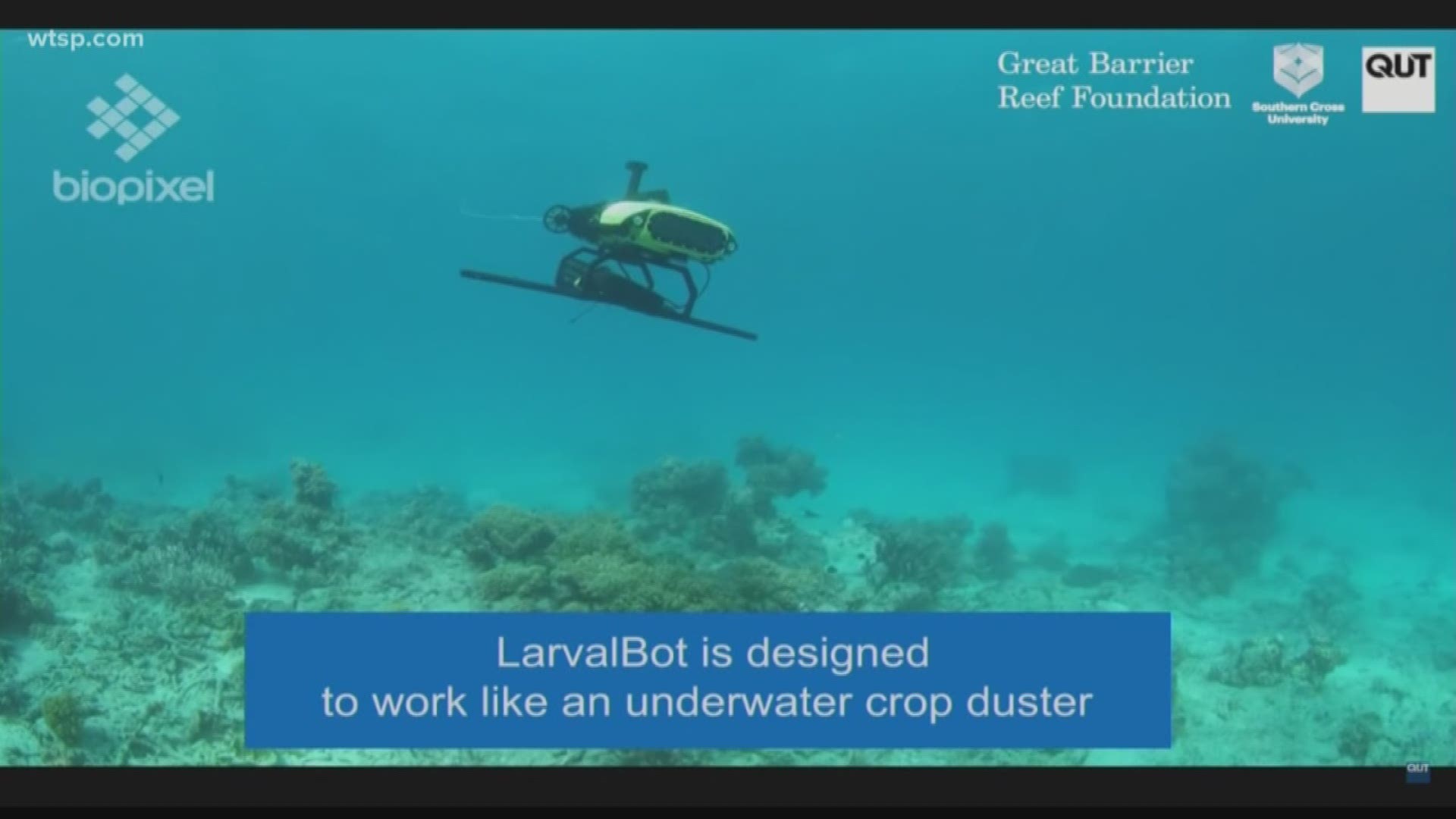TAMPA, Fla. — Two months ago, a briefcase-size robot delivered 100,000 baby coral to damaged sections of the Great Barrier Reef.
The Great Barrier Reef has been a direct victim of warming oceans because of climate change. A number of coral bleaching events, including ones in 2016 and 2017, have caused about half of the reef's coral to die off.
The baby coral released in December onto the reef off Australia was produced from the little coral that survived those bleaching events, which are believed to be more tolerant of warmer water temperatures. The hope is that the baby coral will also grow into "thermally-tolerant corals, and so better able to survive future bleaching events."
Back in Florida, conservation organizations continue to pour resources into saving local coral populations amid outbreaks of dangerous aquatic diseases.
"Coral reefs around the world are in decline, so it's great that that technology has the potential to be applied to restoration efforts in the Great Barrier Reef Tract," Stephannie Kettle, public relations manager for Mote Marine Laboratory & Aquarium, said.
Mote's coral research programs in the Florida Keys use a larvel settlement as one type of restoration effort.
"We also utilize coral micro-fragmentation and fusion for outplanting brain, boulder, and star corals and have an underwater nursery that grows branching coral (staghorn coral) on trees for eventual outplanting," Kettle explained.
In December, Mote reported an unprecedented outbreak of stony coral tissue loss disease continuing to affect more than 96,000 acres of reefs in the Keys. Mote and the Florida Department of Environmental Protection have been leading a Restoration Trials Team to outplant about 2,500 coral colonies of the species affected by the disease.
Before that, Mote announced receiving a grant from the National Fish & Wildlife Foundation, National Oceanic and Atmospheric Administration and others to restore 70,000 coral "seeds" across 130 acres of damaged Florida reefs. These "seeds" will be of "genetic varieties resilient to disease and climate change impacts" and be dispersed over the next three years.
At the Florida Aquarium, scientists are focusing on the rescue of corals from white plague disease in the Florida Keys. The aquarium said it is currently safeguarding 100 individual coral colonies of more than a dozen species in its Apollo Beach facility.
Related: 'Heart of the Sea': Hundreds of animals, 100,000 gallons fill Florida Aquarium's new exhibit
"These animals were brought to our center from wild reefs in the Keys to protect their individual species and genetics and prevent them from being wiped out by the disease that's currently overtaking our reefs and has a 100 percent mortality rate once a coral is infected," Aquarium Spokesman Brian Gallaher said.
The aquarium is also continuing its work reproducing staghorn coral to "increase the genetic diversity of this species and to ultimately create more resilient coral reefs."
The aquarium also has "coral arks" at its Apollo Beach facility, which are "living labs" that grow critical coral species and the long-spined urchin. These coral arks allow scientists to more closely study diseases affecting wild coral and local ecosystems.
What other people are reading right now:
►Make it easy to keep up-to-date with more stories like this. Download the 10News app now.
Have a news tip? Email desk@wtsp.com, or visit our Facebook page or Twitter feed.

